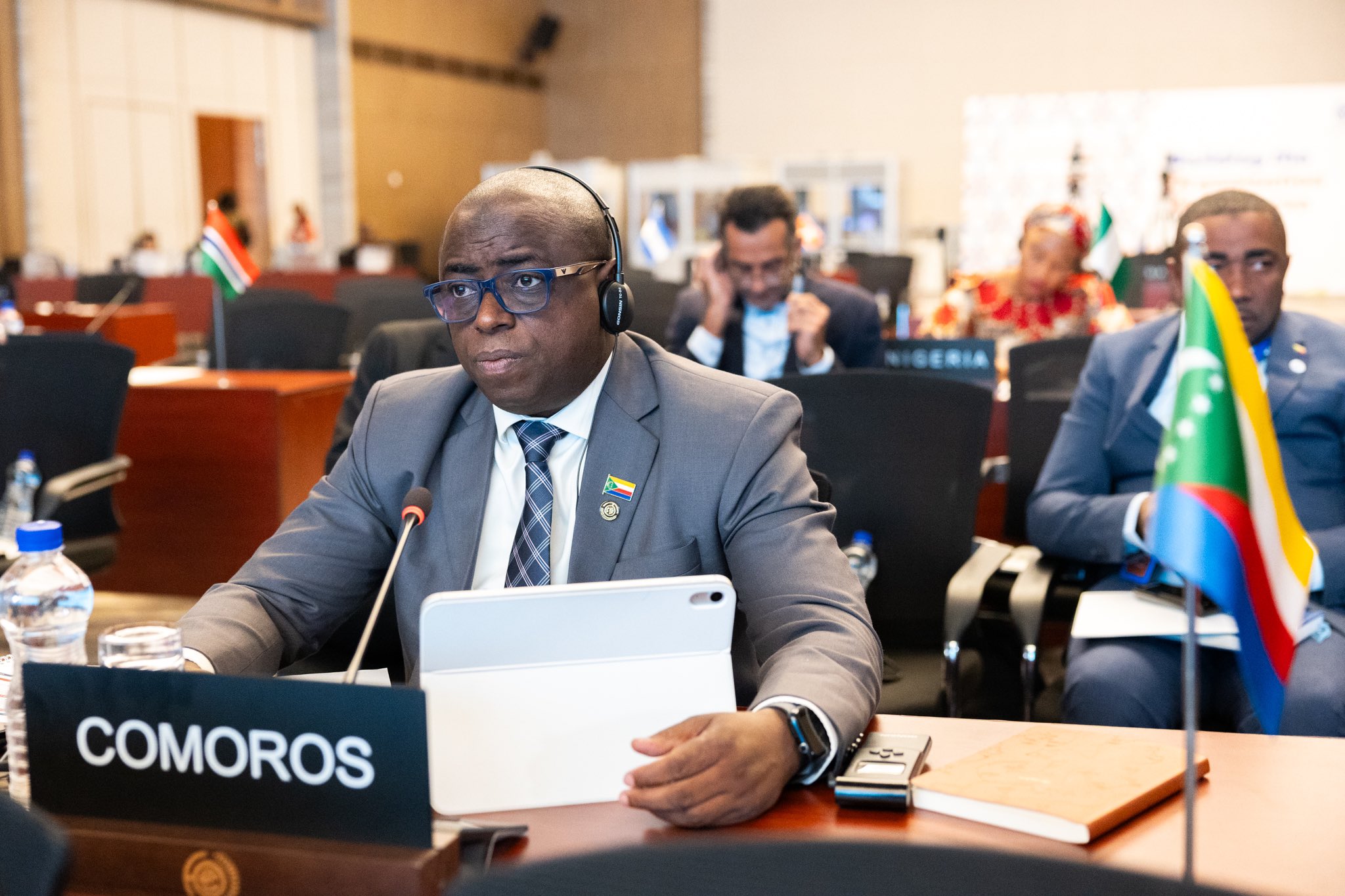Comoros Maritime Corridor Reprices Island Logistics Risk
Comoros launches a $137m maritime corridor to cut dwell times and logistics costs, courting carriers like MAERSK-B and HLAG while tracking BDI cycles; sustained five-day dwell time and 36-hour turnarounds would anchor CPI disinflation.

Comoros’ launch of a $137 million maritime corridor project backed by development finance is a structural bet on logistics-led growth in one of Africa’s smallest, most import-dependent economies. With GDP near $1.5 billion in 2025, debt around 48% of GDP, and a trade deficit close to 24% of GDP, the island state’s growth ceiling is set by transport frictions rather than domestic demand. The new corridor—combining port works at Moroni and Mutsamudu, navigational aids, breakwater reinforcement, digital cargo systems, and last-mile road links—is designed to compress time and cost in the trade equation that determines household inflation and firm-level viability. As fuel, food, and construction inputs dominate the import bill, every hour shaved from vessel turnaround and every percentage point cut from logistics overhead delivers a macro dividend disproportionate to project size.
The mechanism is straightforward. Today’s container dwell times frequently stretch beyond 10–12 days, with ship waiting times and weather-related disruptions adding unpredictability to small-vessel schedules. Berth productivity rarely exceeds 12–15 moves per crane per hour, and shallow drafts constrain vessel size, fragmenting volumes and weakening bargaining power with carriers. The program targets a two-step upgrade: physical capacity that lifts effective draft and berth length to accept larger feeder vessels, and process re-engineering—single-window clearance, pre-arrival processing, and yard automation—that reduces dwell time to five days and raises crane productivity above 20 moves per hour. The knock-on effects include a 15–20% reduction in door-to-door logistics costs for key import categories, equal to roughly 2–3 percentage points off headline CPI pass-through in shock years.
A maritime corridor does more than move boxes. It re-prices country risk for carriers and insurers. If schedule reliability improves and claims fall, war-risk and weather surcharges narrow, and carriers like Maersk (CPH: MAERSK-B) and Hapag-Lloyd (ETR: HLAG) have stronger incentives to maintain direct feeder calls rather than tranship via costlier third ports. The corridor also creates optionality to synchronize with regional services as the Baltic Dry Index (BDI) and container benchmarks cycle, allowing Comoros to arbitrage seasonality instead of being price-takers. Because bunker costs remain tied to crude dynamics, with ICE Brent (LCOc1) swinging in the $78–88/bbl range in 2025, shaving port time is the most controllable driver of voyage economics available to a microstate.
The sectoral impact is broad. Fisheries and agro-processing—roughly 8% of GDP—gain from cold-chain and reefer reliability, reducing post-harvest losses by an estimated 10–15% and securing export-grade quality for higher-margin markets. Construction benefits as cement and steel inputs clear faster, trimming project cycle times and capitalized interest for developers. Tourism—accounting for around 12% of GDP when indirect effects are included—improves its reliability proposition as hotel operators can plan inventory with fewer stockouts, raising occupancy and RevPAR. On the fiscal side, a tighter customs window and digitized manifests lift collection efficiency by 1–1.5% of GDP over two years, offsetting the project’s concessional debt service while formalizing previously informal trade flows.
Comparative evidence supports the thesis. Cabo Verde’s phased port upgrades cut dwell time by half and reduced import price volatility, while Mauritius’ digital gate systems accelerated truck turnarounds and stabilized CPI despite energy shocks. For Comoros, similar gains would anchor a shift from donor-driven volatility management to logistics-driven resilience. The corridor also dovetails with AfCFTA rules-of-origin dynamics, positioning Comoros to participate in Indian Ocean feeder networks serving Eastern and Southern Africa. Critically, the project’s design includes climate-resilient features—breakwater elevation, sediment management, and storm-surge modeling—that protect asset life in a geography exposed to cyclones and coastal erosion, preserving the effective capital stock.
Markets will read execution as policy credibility. Early wins should appear in hard metrics: vessel turnaround time falling below 36 hours, crane productivity consistently above 20 moves per hour, and average container dwell time sustained under five days. A throughput rise from an estimated 40–60k TEU toward 90–100k TEU by 2028 is realistic if carriers commit stable rotations and domestic last-mile bottlenecks are cleared. Employment effects—2,000–2,500 direct and indirect jobs during construction and early operations—feed into household income and tax receipts without overheating, given the project’s foreign-exchange nature and import bias.
Forward risk sits in governance and complementary reforms. Without a fully functioning port community system, single-window enforcement, and transparent tariff setting, physical upgrades will underperform. Procurement slippage would raise costs and defer benefits, while inadequate maintenance funding could erode productivity gains within five years. By mid-2027, investors will watch three indicators to validate the structural story: logistics costs as a share of CIF values falling by 15% from the 2024 baseline; customs clearance within 48 hours for at least 70% of containers; and a measurable reduction in food-price volatility relative to the 2018–2024 average. Hitting these targets would confirm that the $137 million corridor has shifted Comoros from a price-taker at sea to a credible, schedule-reliable node in the Western Indian Ocean network, lo




